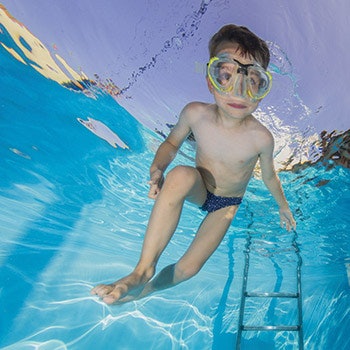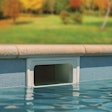
There’s been quite a bit of discussion of late over the question of how our industry will manage to attract a new generation of professionals in the coming years — a critical issue I’d like to address here with a few of my own thoughts and observations.
As best I can tell, the issue mostly impacts small firms that more often than not fall into the “Ma & Pop” category. There exists a widespread concern that as owners and managers of these companies either retire or pass away, the industry faces a potentially debilitating deficit of new blood taking the reins.
A big part of the problem, at least as I see it, is that the pool and spa industry lacks a formal education component. Yes, there are short-form courses available through a variety of sources that are extremely helpful in educating industry members over a range of topics. For all of the good that those programs do, they are not a substitute for formal, university-based study, which among other things would provide a discernible path of entry into the profession.
(For the record, there is one AA degree available for Aquatic Engineering, an online course available from Florida’s Keiser University.)
Fact is, everyone in our industry comes from backgrounds of somewhat related study, or simply by way of experience. While I certainly would never criticize the power of transferred knowledge or the expertise that comes from learning on the job, when it comes to attracting college bound kids, the lack of formal study means that working in our industry simply doesn’t cross the radar of kids considering paths of study.
Yes, the various accreditations available in our industry do have tremendous value and should only be expanded, no question. Still, we need to recognize that for all the good those programs do, we need to confront the fact that being a “certified pool builder” does not carry the same attractive impetus as being a landscape architect. Hopefully there will come a day when there are four-year undergraduate degrees in aquatics, but clearly that time may well be quite a long time in coming.
So in the meantime, how do we attract young people to the fold?
In my view, part of the answer comes down to the need to promote the benefits of pool and spa ownership. Just as drawing new consumers will require a national campaign that articulates the profound benefits of pool/spa ownership and the aquatic lifestyle, so too will inspiring a new generation of industry professionals require the same kind of widespread messaging.
We know it’s human nature for young people to gravitate toward vocations that encompass some type of idealistic component, especially those with a creative bent. Youthful idealism is a huge factor driving entry into other lines of work, from the law to engineering to public service to the arts and business. When we’re young, many of us want to think that the work we’ll do in our lives will make the world a better place and earn a viable living.
We also know that pool/spas/hot tubs do, in fact, make the world a better place for a litany of reasons that we all should know. It’s no stretch at all to imagine that with those benefits in mind, many high-minded youths would embrace the industry and themselves seek to become “aquatic designers” or “aquatic architects.”
I’ve long pounded the drum that there’s great benefit to viewing pool and spa design and construction as something akin to an emerging art form. For many, working with bodies of water is a creative pursuit similar to the work of architects or landscape architects. Again, it’s the nature of youth to harbor a desire to pursue a career that is based on creativity and imagination.
If I was trying to convince a young person to give our industry a look, the first thing I’d do is show them images of projects that are artistic in some way or another and point out that the trend in our industry is toward designing and building complete outdoor spaces, a development that further expands the need for creative skills and thinking.
Another big carrot that has driven many people to set up shop in our industry is the freedom that comes with owning and operating a small business. Some of our most successful practitioners of the aquatic arts are those who are fiercely independent in nature. (It also doesn’t hurt that many enjoy working outdoors in attractive environments, a fine alternative for those who rebel against the idea of spending their lives in an office cubicle.)
Ours is an industry that enables many to self-stylize their work and their organizations. At its best, pool and spa work rewards ambition and individuality. I don’t mean to be cliché or glib, but in many real ways our industry is full of examples of people living the American Dream.
We also have to realize that attracting young people means embracing all things digital. Like almost every aspect of our society, the future will be shaped by the Internet, smartphones, tablets, social media and online marketing. Us older folks have had to adapt to this brave new world, but our kids have been raised in it. Any profession that seeks to attract young faces will necessarily be steeped in today’s rapidly expanding world of instant and widespread communication, marketing and education.
Returning to the issue of formal education, we should be willing to scour institutions of higher learning for students in related fields such as industrial design, architecture, mechanical engineering, landscape architecture, chemistry, material science, CAD design, sports medicine or even art history. That would mean, among other things, participating in job fairs at college campuses as well as building bridges to school administrators and instructors so that we might be able to participate in the education process by way of guest lecturing or contributing to course material, or even setting up summer internship opportunities.
A few years ago, my very close friend Mark Holden, a degreed landscape architect who now is one of our industry’s leading designers and educators, asked me to lecture in a class he was teaching about aquatic design at Cal Poly University Pomona as part of that school’s landscape architecture program. I participated on three different occasions and each time was deeply gratified by the interest and enthusiasm the students demonstrated. By explaining the power and beauty of aquatic design work, Mark was able to influence his student’s thoughts about their futures.
I came away from those brief experiences firmly believing that if our industry did a better job of articulating what the world of water-driven design was all about, we’d find ourselves in the company of a growing set of young people seeking to carve out their own niches within the world of pools, spas and all things aquatic.
Comments or thoughts on this article? Please e-mail [email protected].












































